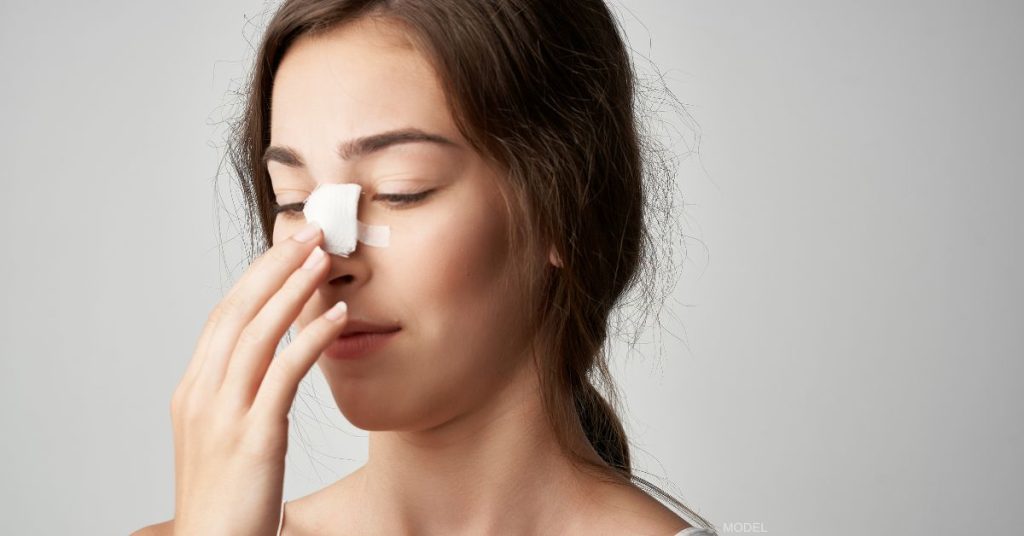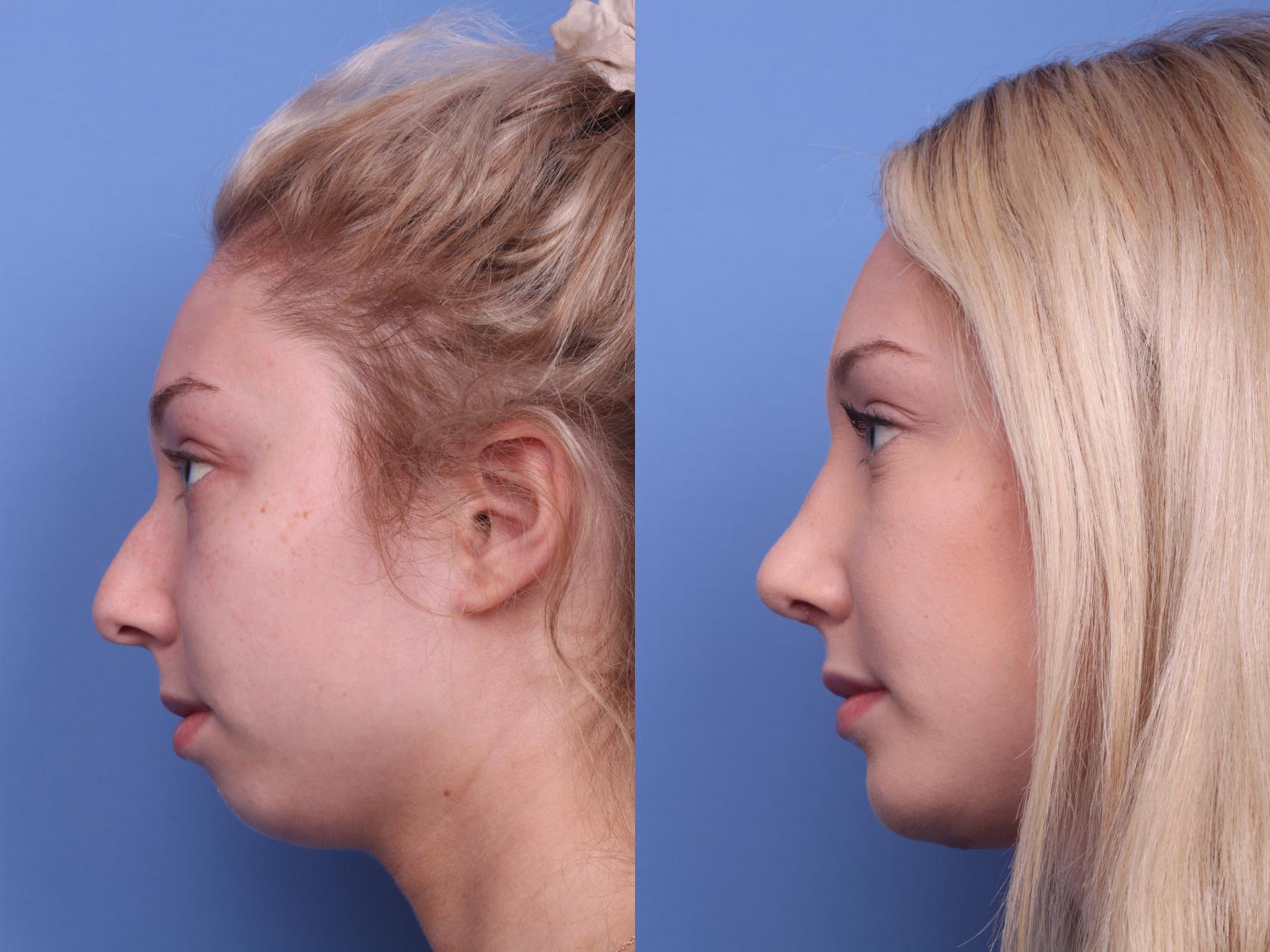It is common for rhinoplasty patients at my Scottsdale practice to have a cast on their nose after surgery. Most rhinoplasty surgeries involve restructuring the cartilage and bones inside the nose, which have to be held in place while they heal to prevent the need for additional surgery.
If you have ever had a cast before, you know that they are essential in keeping your bones together while they heal after a break. Casts give your bones additional support but also provide an extra layer of protection against further injury. A nasal cast works in the same way, just on your face.
Rhinoplasty Before and After Photos
What Is the Purpose of a Nose Cast?
Typically, a nasal cast starts with a layer of tape on the exterior of the nose. This layer has several purposes:
- It helps contain the swelling so your cast isn’t uncomfortable and doesn’t loosen too early.
- It creates a base for the cast to form.
- It protects your skin from the material used to create the cast.
Next comes the casting material, similar to those medical doctors use to treat broken arms and legs. It isn’t as heavy or thick as that material because that much weight on your face could cause serious neck and nose problems. The stuff used on your nose is a little lighter and thinner to give your nose protection and support without weighing down your face.
Once the casting material has been added and shaped to your nose, it is allowed to dry until it is hard, which completes the cast.
How Do You Take Care of Your Nose Cast?
Your nasal cast will require more care and caution than an arm or leg cast because it isn’t as thick. The nasal cast is still hard, but it’s also vulnerable.
- Be gentle with your nose and cast. Running into things, bumping your nose, or even accidentally hitting yourself in the face can cause additional damage to your nose despite the presence of the cast. Be aware of your surroundings and move carefully to avoid banging your nose.
- You should be careful of getting your cast wet, just like with an arm or leg cast. Getting your cast wet could cause it to become loose and even fall off before your nose has healed enough. You can still wash your face and body with the cast on if you completely avoid the area near your nose. Patients typically try bathing instead of showering and spot-clean their faces.
- Avoid picking at your cast. Over time, your cast will start to loosen on its own. This is perfectly normal, but it also comes with a new frustration: the urge to pull on the cast. It’s really important that you don’t do this! Your cast is becoming looser because the swelling is going down, and your nose is healing, but it won’t be ready to come off all at once. Picking at the cast to help it come off sooner could cause damage to your nose and set back the healing process.
You can read more about what to expect after getting a nose cast on the Healthline website.
How Long Should a Rhinoplasty Cast Stay On?
People who have worn casts before know that they can become quite annoying the longer you have to wear them. Nasal casts are no different. The good news is that nasal casts can come off in as little as a week, unlike a leg cast. Your surgeon determines whether your cast can come off during one of your follow-up appointments based on how your nose is healing. When your cast is ready to come off, your surgeon pulls it off. I wrote another blog post about what to expect during your rhinoplasty recovery.
After the Cast is Removed
Congratulations! You have made it through your initial healing after rhinoplasty surgery. Your nose is starting to look normal again, and you’ll get your first look at your nose since the surgery. Your nose will probably still be slightly bruised and swollen and won’t look perfect. Don’t worry! As your nose continues to heal, the bruising and swelling will disappear, and your nose will look better each day.
Rhinoplasty from Dr. Hobgood
Dr. Todd Hobgood regularly uses nasal casts on his rhinoplasty and revision rhinoplasty patients and has a great deal of experience with the surgery and recovery process. Dr. Hobgood also has over a decade of experience with facial plastic surgery in the Phoenix and Scottsdale, AZ, area. To schedule a rhinoplasty consultation with Dr. Hobgood, call (480) 214-9955 today or use our online form to request a consultation.









Leave a Reply